Thailand 2014: Patara Elephant Farm
Introduction
Cathay Pacific Lounge San Francisco
Cathay Pacific First Class San Francisco to Hong Kong
Cathay Pacific Lounge The Pier Hong Kong
Cathay Pacific Business Class Hong Kong to Bangkok
Millennium Hilton Bangkok
Cooking with Poo
Overnight Train from Bangkok to Chiang Mai
Le Meridien Chiang Mai
Patara Elephant Farm
Bangkok Airways Economy Class Chiang Mai to Ko Samui
Conrad Koh Samui
Bangkok Airways Koh Samui to Bangkok
Thai Airways First Class Check-in and Lounge Bangkok
EVA Air Evergreen Lounge Bangkok
Louis’ Tavern First Class CIP Lounge Bangkok
Singapore SilverKris Lounge Bangkok
Thai Airways First Class Bangkok to Hong Kong
Singapore Airlines Lounge Hong Kong
Thai Airways Lounge Hong Kong
Asiana Business Class Hong Kong to Seoul
Asiana Airlines First Class Lounge Seoul
Asiana Airlines First Class Suites Seoul to New York
United Airlines Business Class PS Service New York to San Francisco
Prior to my trip to Thailand, everyone told me that I had to go ride an elephant, so I did a lot of research about elephant tourism prior to the trip. I essentially was trying to figure out if there was a way to pay enough to assuage my conscience, and I ended up making a reservation at Patara Elephant Farm.
Patara is by far the most expensive elephant camp that I found at 5800 baht per person, not including any tips to your guide. But I found no negative reviews of Patara, not even ones from people who thought that the elephants might secretly be abused, so I figured that it was worth the extra cost.
Now, before I get into the actual review, I will say that I did enjoy myself. It’s pretty awe-inspiring to get so close to these giant animals who are very clearly smart and have personalities. But from being so close to these animals, it’s also very clear to me that they would rather be doing their elephant thing than letting people ride them, even if it’s not that big of a deal for them to have a human on their back. So even if an elephant camp does a good job taking care of them and they’re well-fed and well-groomed, I can’t help but think that something like a nature reserve where elephants are allowed to live as elephants and tourists just go on safari and look but don’t touch is ultimately better for the animals (I’ve done this before and it was awesome and I had no moral qualms!). Would I do this experience again? No, I don’t think so. Should you do it? Well, that’s up to you.
Anyway, I made reservations well in advance to make sure that I got this specific elephant camp, which proved to be somewhat unnecessary as there were people who had booked the tour just days before. We were picked up from our hotel in a nice van that had working seat belts, which was a first in Thailand, and then we were driven to the elephant farm after picking up some more passengers.
In the beginning, you’re just kind of standing around idly, unsure of what to do, but then elephants start appearing, and it’s like, holy shit there’s an elephant right there. One of the founders of the elephant camp gives an overview of Patara and its mission and why it exists, although on the day that we went, his speech was overshadowed by the elephants that started having sex in front of us. As an aside, there’s access to bathrooms with running water throughout the tour.
After the speech and watching elephants procreate, we were split into two groups, each no larger than 8 people. My group got in a van again to head to the area where we would meet our elephants for the day. We were given an overview of our day, which would involve feeding, cleaning, and riding the elephants, and then we were assigned an elephant one by one. I believe that there was some amount of non-randomness to the elephant assignment process, as I was one of the youngest and most able-bodied people in the group, and my elephant turned out to be one of the most independently-minded, while the oldest woman in the group got one of the most docile elephants.
Step number one is to feed the elephants, which is supposed to make them like you. It’s quite an interesting sensation to stick your hand into an elephant’s mouth.

Next up was elephant health checks, which involved handling elephant poop and smelling it (not as gross as it sounds! mostly because elephant poop doesn’t really smell like anything).

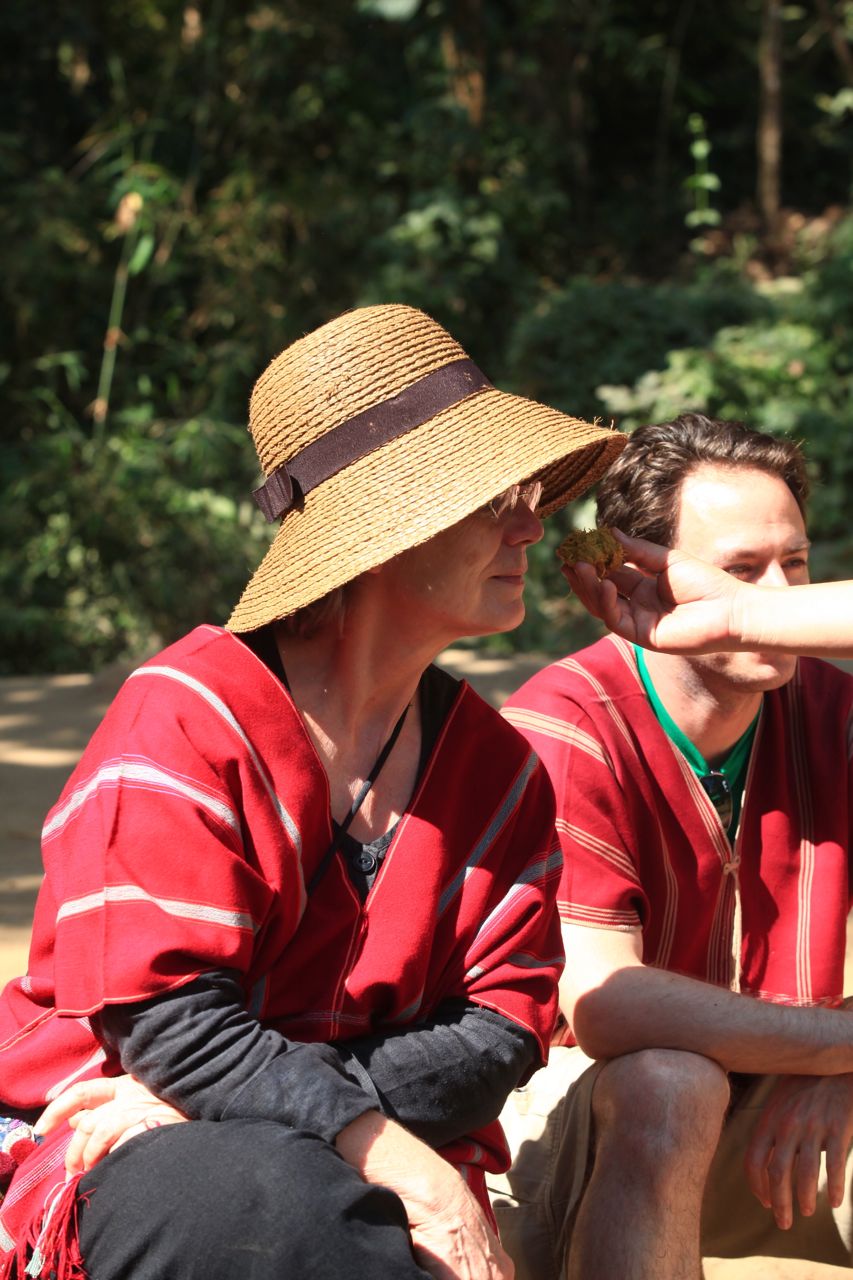
Then we beat our elephants with brushes. The elephants seemed to enjoy this a lot, as did the trainers who just told us to hit the elephants harder.
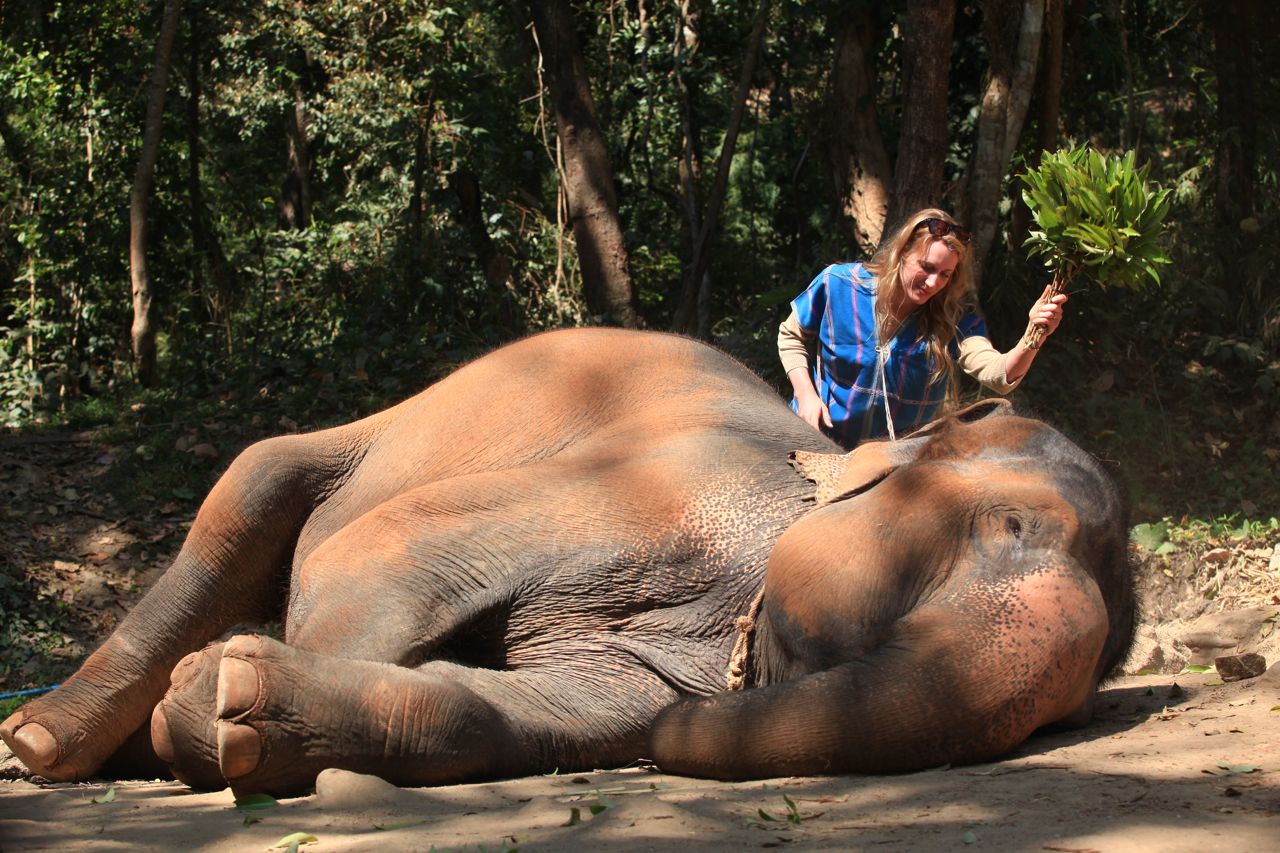
Then we went to the waterfall to bathe our elephants. Rather than just throw buckets of water at our elephants (which we did eventually do), we were supposed to really scrub our elephants. This part was at times slightly scary for me because my elephant didn’t really care that I was on its back trying to scrub it, and it would move around a lot in the water while I was just trying to stay on top of it and not fall into the water. And there was the fact that my legs were often stuck between two elephants as my elephant would move around, and my legs very easily could have been crushed. But this was really quite fun and a bit comical.
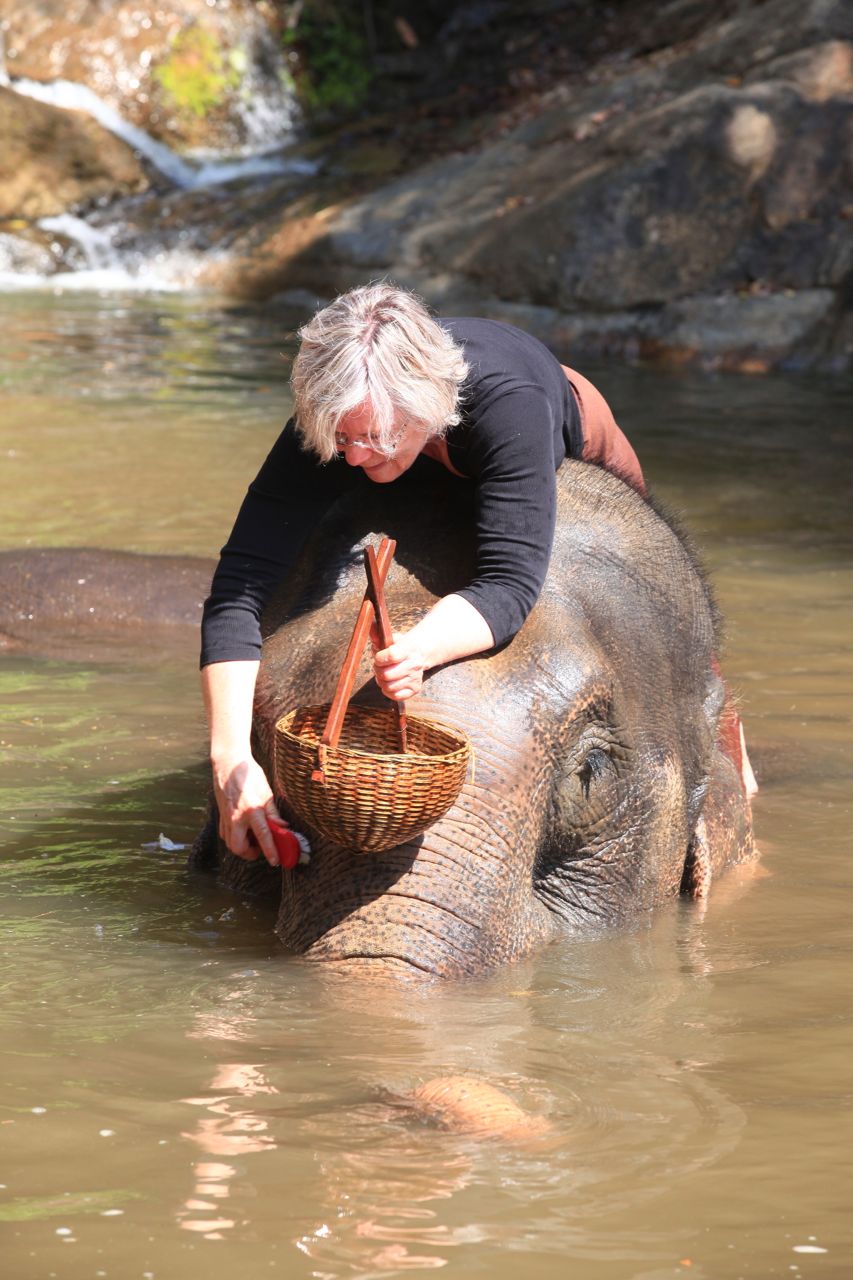
And then there were some obligatory touristy photos, including ones where you get sprayed by an elephant squirting water out of its trunk.

We then learned how to mount an elephant and ride it. The ride went up and down a pretty steep hill, which some people find to be scary, but I found it to be quite sturdy and better than if I were to try to traverse the hill on my own.

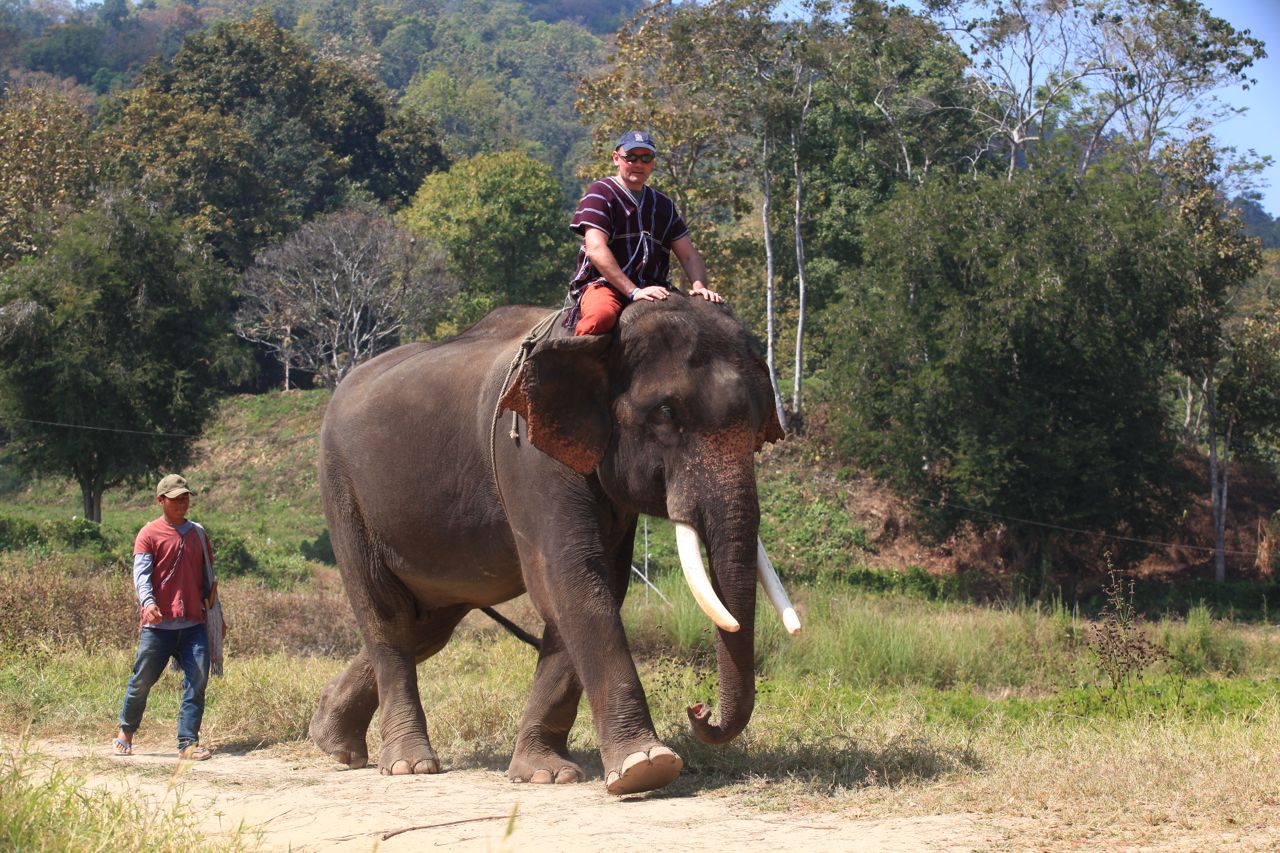
We rode our elephants to lunch, which was an assortment of meat, rice, sweets, and fruit. As a vegetarian, there is nothing savory to eat, so you might want to pack something salty on your own (I would have done this had I known as there’s only so much sweet food you can eat at once).
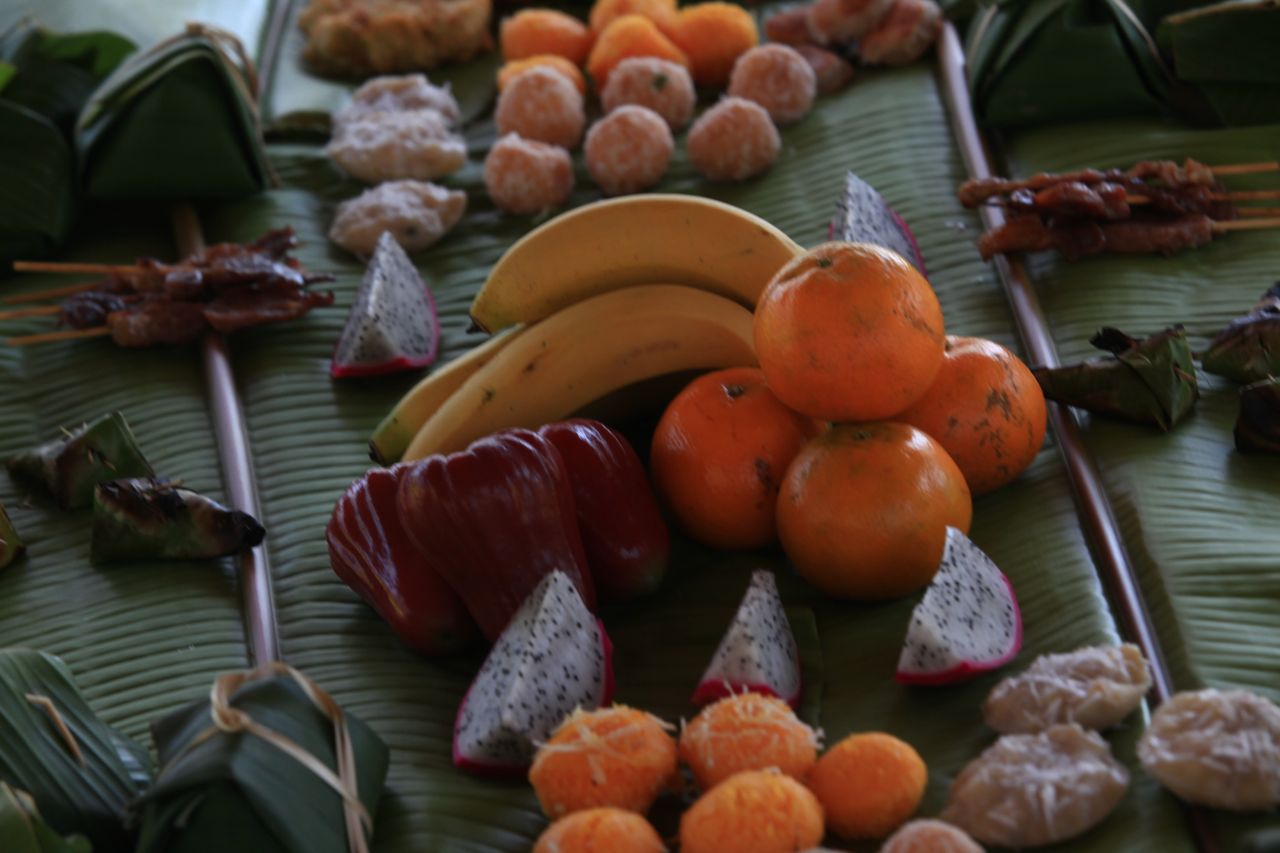
Finally, we had some time to play with some of the newborn elephants on the farm before riding our elephants to the final pickup place.
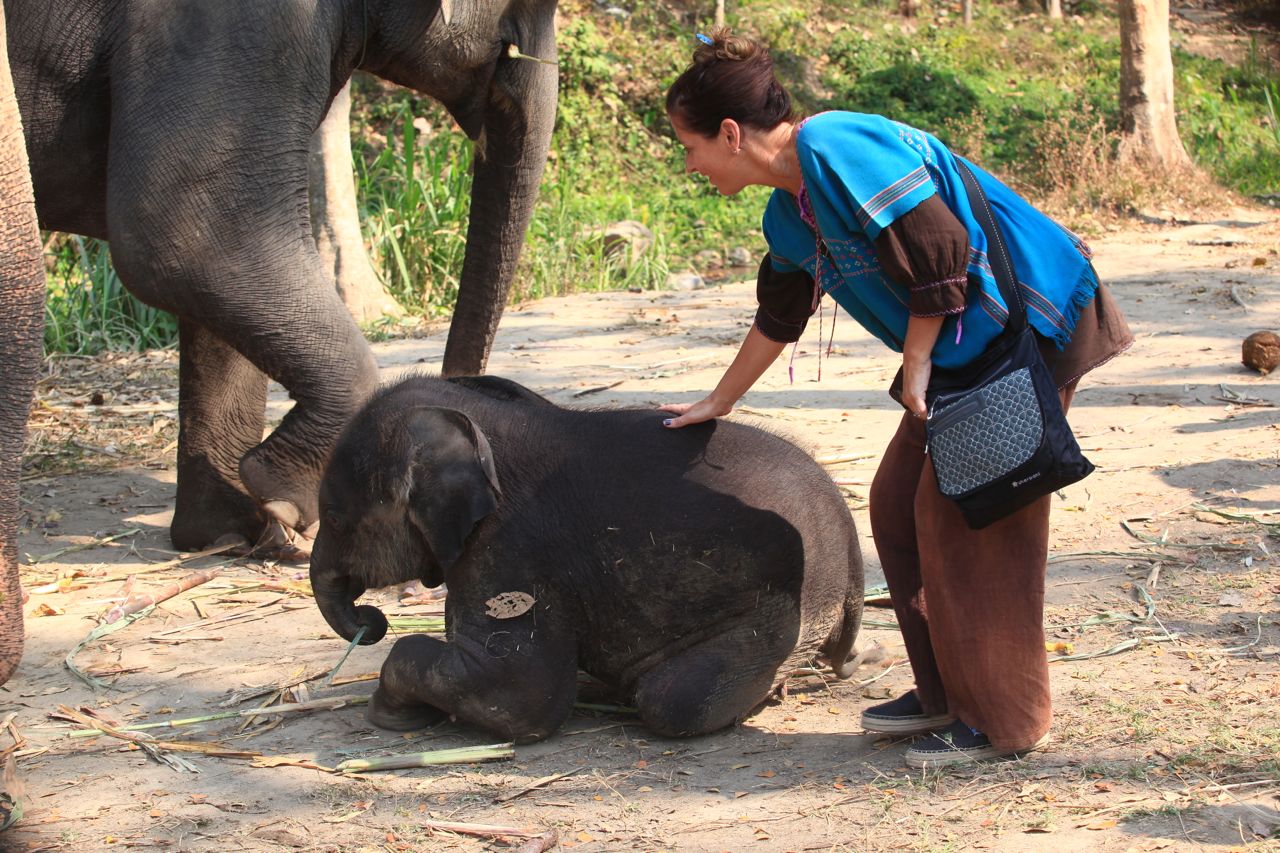
At the end of the day, there’s an opportunity to tip your guide (my guide was pretty terrible and ignored me most of the day, to the point that he was even ignoring me when I tried to hand him money for a gratuity). As for logistics, bring sunscreen, bug spray, and a swimsuit. It’s probably easier just to wear flip flops for most of the day that you don’t mind getting dirty, since it felt easier to ride the elephants sans shoes. You don’t need to worry about taking pictures, as you’ll receive a CD of photos and videos throughout the day.
One weird thing that happened throughout the day was that there were periodically random people who would drive up with bags of bananas and try to “poach” your elephant experience. As in, they hadn’t paid for anything except for the bananas that they had brought and they would feed the elephants, and our guides didn’t do anything about these people.
As for safety, I generally felt safe (except for a little bit of apprehension while washing my elephant), but we heard at the end of the day that a woman in the other group had to go to the hospital because she fell off her elephant. I don’t think that most people need to worry about anything (is it bad that I knew exactly who had fallen off their elephant just based on my first impressions at the beginning of the day? there was a really annoying woman who would ask really stupid questions, and she did turn out to be the woman who fell off), but the experience does involve risks.
This was an experience that I will definitely remember, but I’m still a little undecided about the morality of the experience.